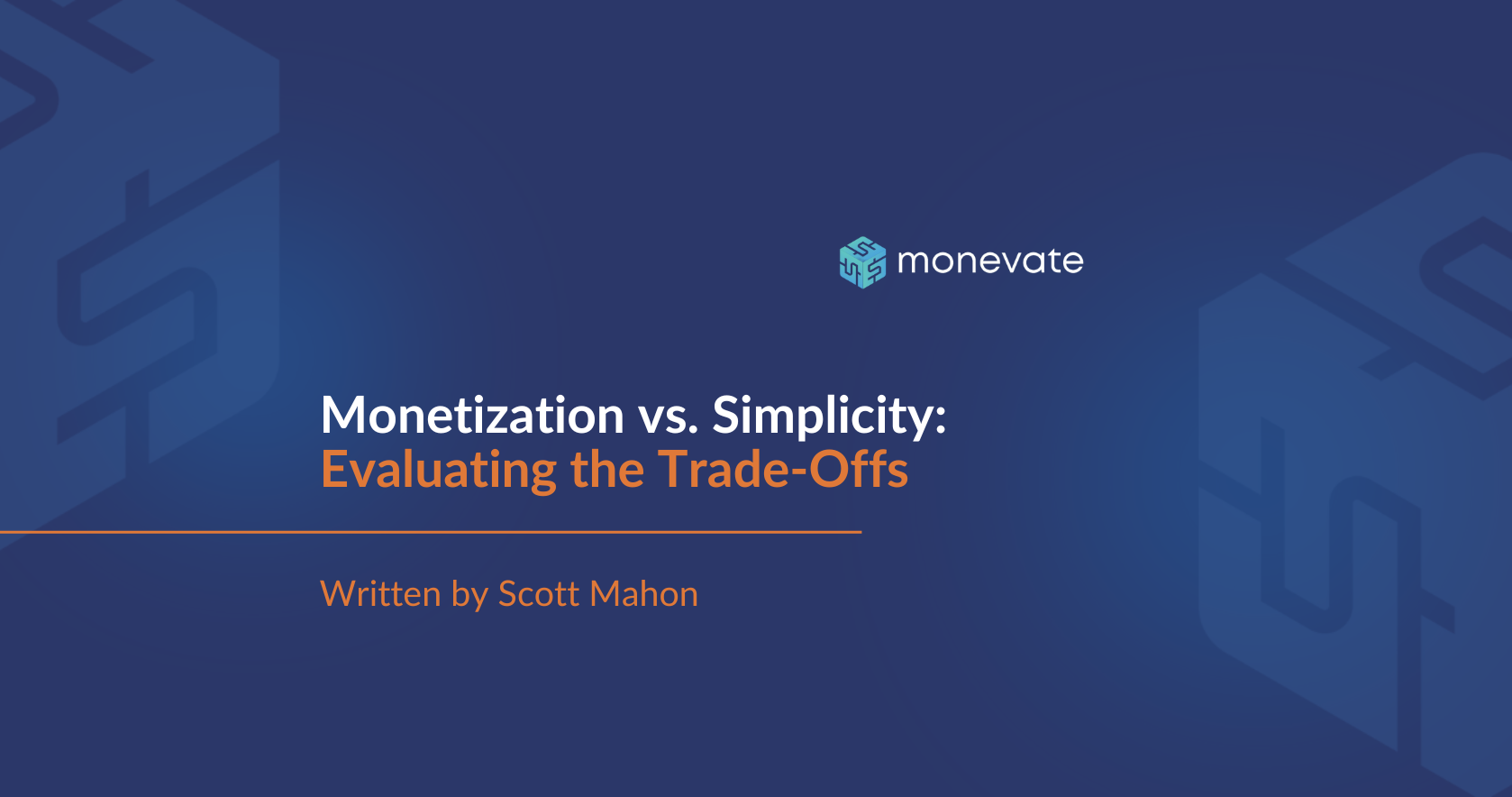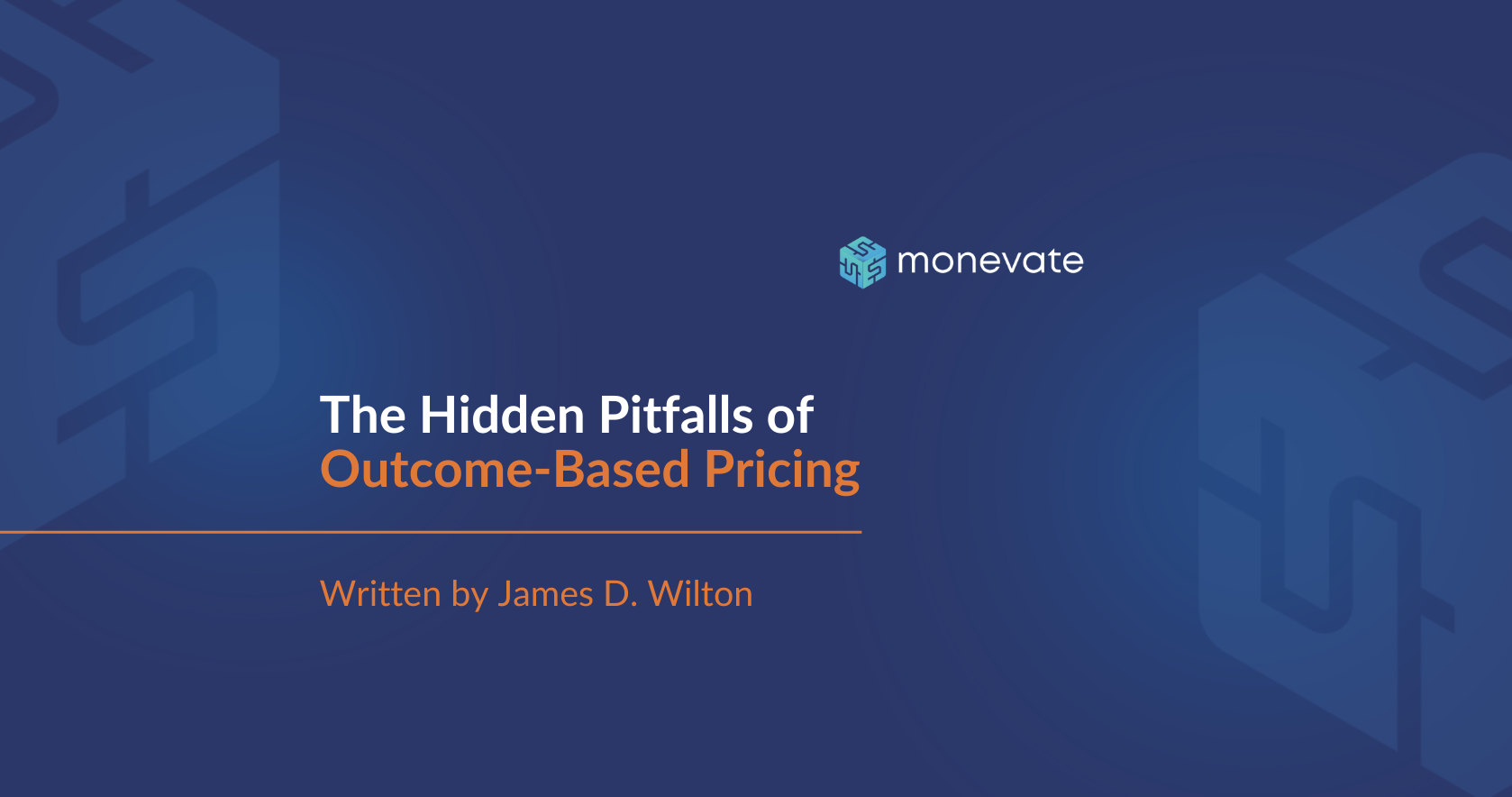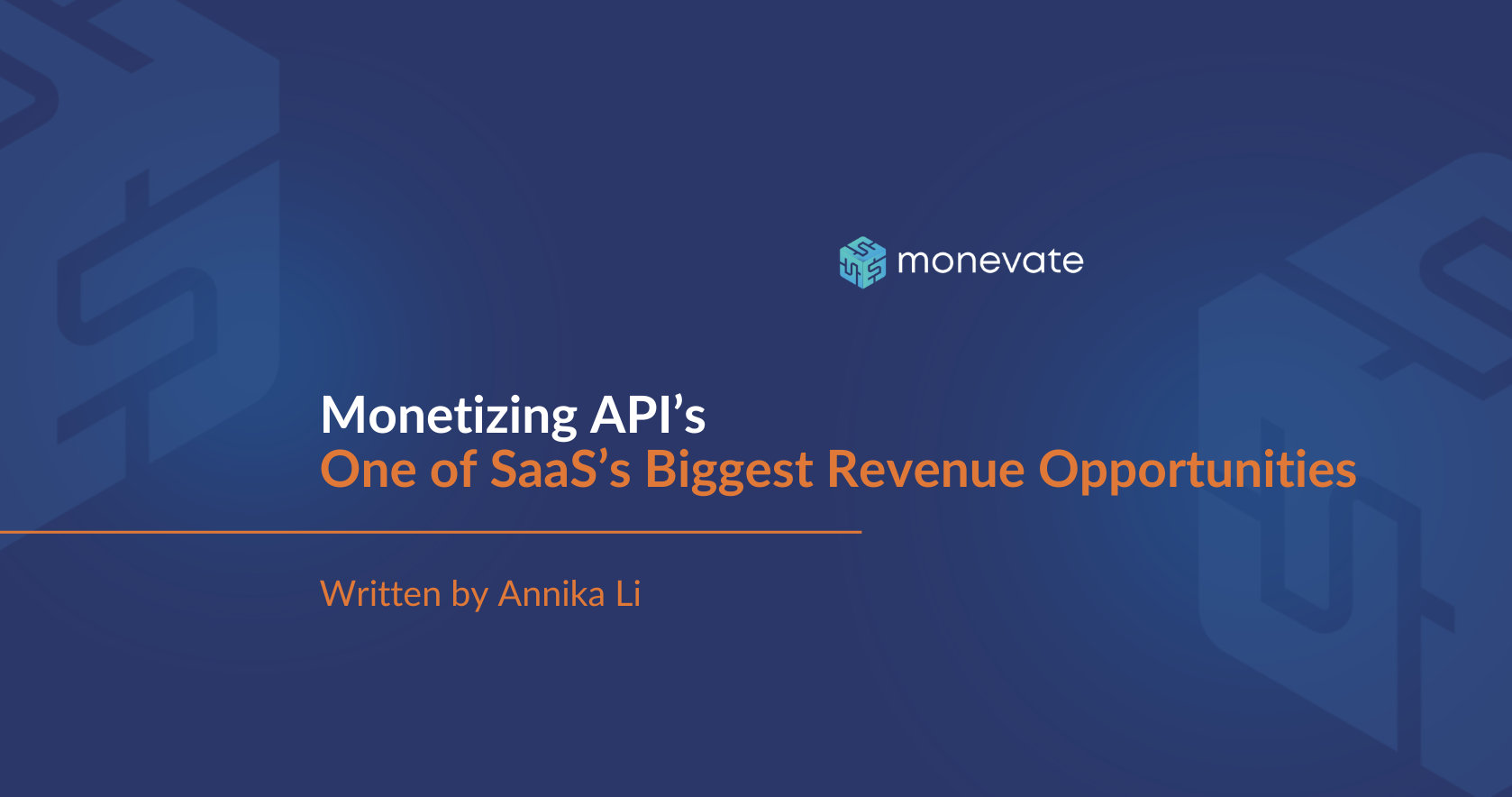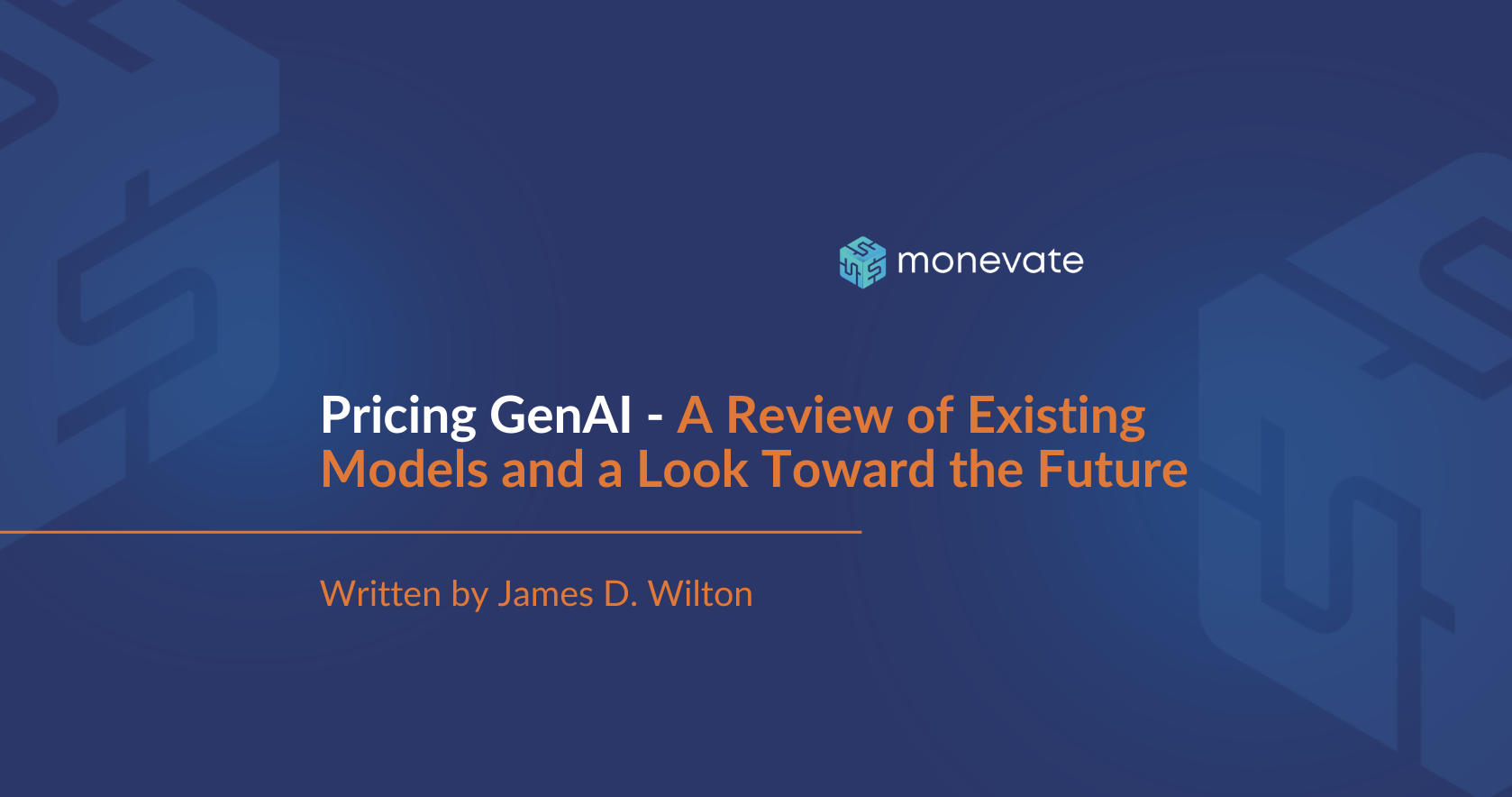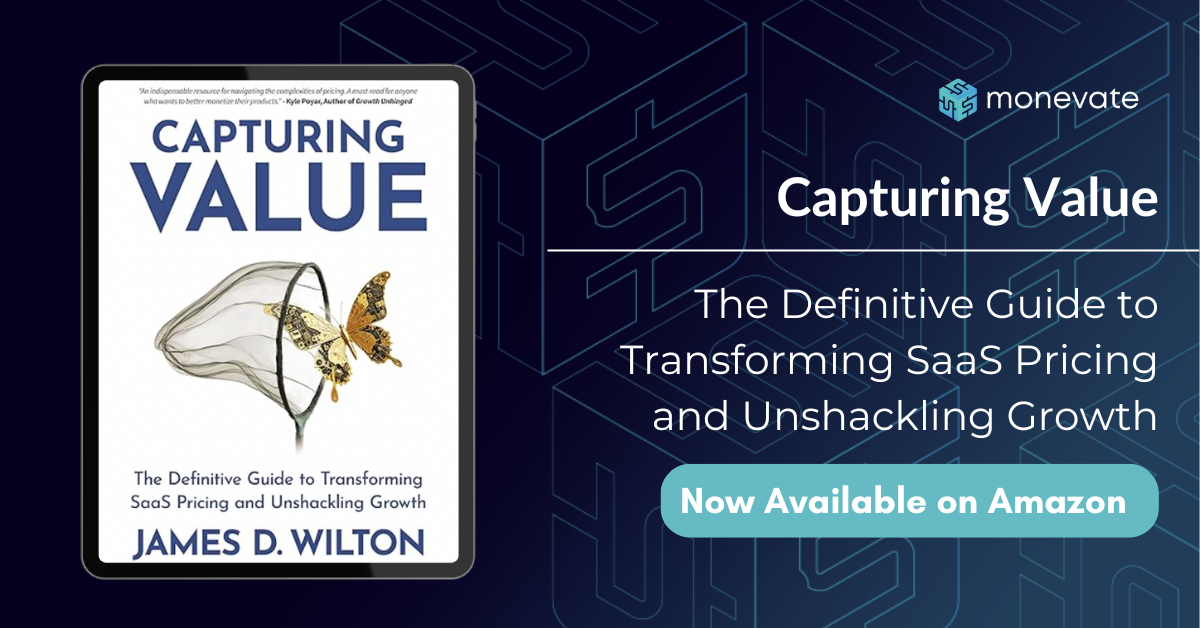Never Miss a Pricing Opportunity with Your Portcos
Strategic pricing has huge potential as a value capture lever, but Private Equity investors can sometimes struggle to validate pricing opportunities and unlock ROI.
James D. Wilton, founder of the boutique pricing consultancy Monevate, has released a new whitepaper, Private Equity Operators: 8 Signs to Identify a Strategic Pricing Opportunity within your B2B XaaS Portfolio Company, which is now available to download here.
Our recently launched whitepaper, Private Equity Operators: Private Equity Operators: 8 Signs to Identify a Strategic Pricing Opportunity within your B2B XaaS Portfolio Company, outlines the key indicators that will show you where the strategic pricing opportunities are within your XaaS portfolio, with a three-tiered roadmap to give you tactical pricing options. We draw on our industry insights and expertise to assess the criteria for pricing optimization, and key areas you should be focusing on when implementing a new strategy.
Here’s a glimpse into the impact this approach, which is explored in detail in the whitepaper, could have on your XaaS portco.
Strategic pricing can impact your bottom line more than anything else.
It’s been a few years since the Private Equity industry first opened its eyes to the huge ROI potential that pricing optimization offers. Investors needed little persuading to recognize the quick wins that tactical pricing actions could yield. Wins such as increasing sales volumes, creating stronger differentiation across customer bases, and tapping into new customer segments. It’s not unusual to see clients achieve a 10-15% increase in annual growth rates as a result.
However, XaaS companies can face multiple barriers when attempting a new pricing strategy.
Knowledge is often the most common obstacle – because strategic pricing isn’t an area that is widely practiced. To build a new pricing strategy, you should have a thorough understanding of different models, and the pros and cons of each of them. Plus, there’s a good amount of information that you need to have at the ready before being able to optimize your pricing effectively.
But, it’s not just a lack of knowledge that prevents Private Equity investors from leveraging pricing effectively. As pricing strategies can be a complex process to navigate, a lack of resources can also be a factors. Whether you’re trying to involve your customers or assessing problem-solving options, time-intensive research is crucial.
Throw this in with the risk that comes with adopting new pricing strategies, and it can be easy to see why Private Equity investors can sometimes struggle to validate pricing opportunities. Our experience working with dozens of high growth SaaS companies over the past 2 years has shown us there are 8 signs that reliably suggest a sizable strategic pricing opportunity.
The paper outlines several effective tactics you can adopt to assess the criteria for pricing optimization. We’ve broken these tactics down into three tiers; low, medium and high effort.
Low-effort pricing strategies
These are surface-level insights that can be validated through conversations with portco leadership and team members.
Medium-effort pricing strategies
Medium-effort pricing strategies can be achieved through basic analysis, as well as readily available company metrics.
High-effort pricing strategies
If you’re willing to invest in customer-level analysis and/or primarily customer research, then you’ll be able to utilize these high-value insights.
Validating pricing transformations
Strategic pricing strategies can effectively drive revenue growth and net revenue retention. But this process doesn’t need to be an uphill battle.
Armed with the knowledge of these eight signs, you’ll be able to confidently assess the likelihood of new pricing opportunities.
Download the whitepaper by clicking here.
